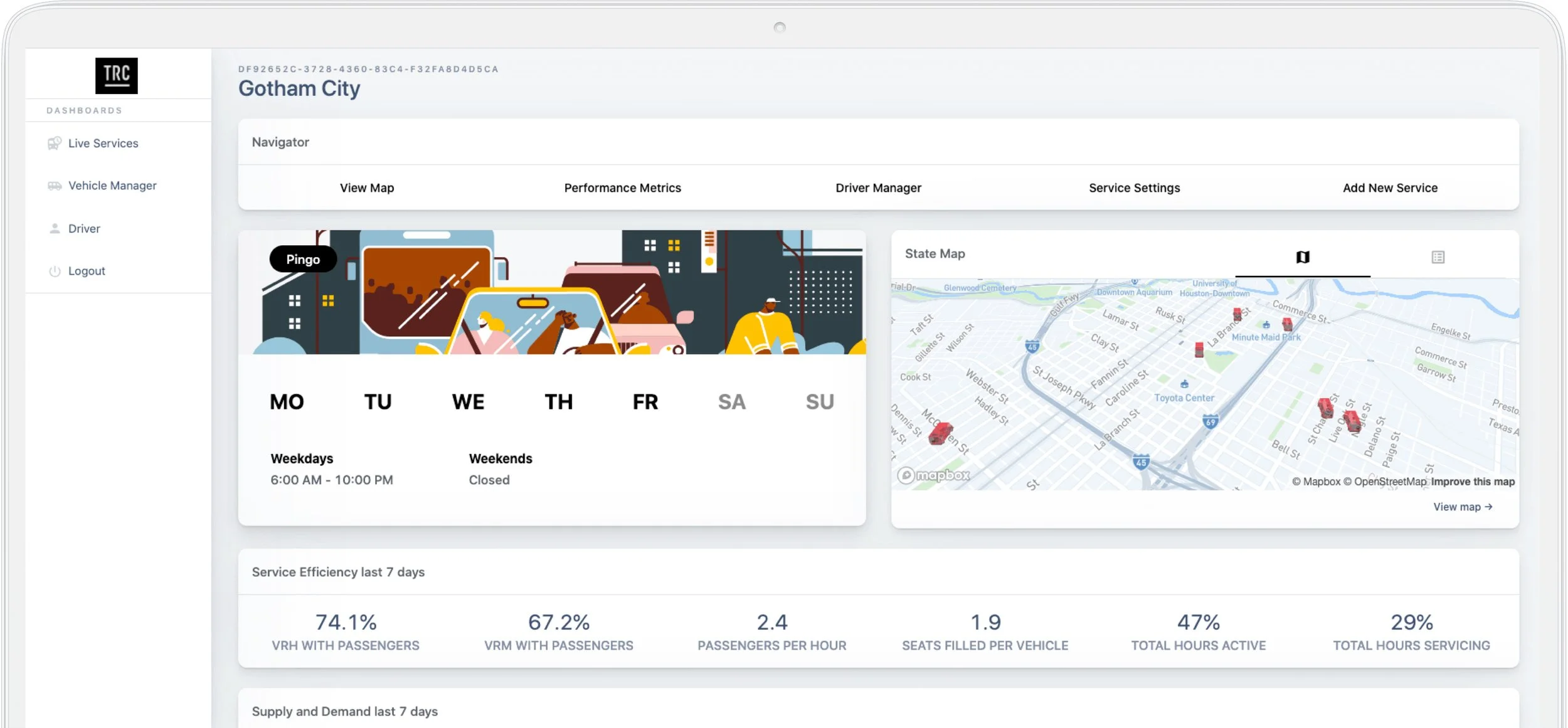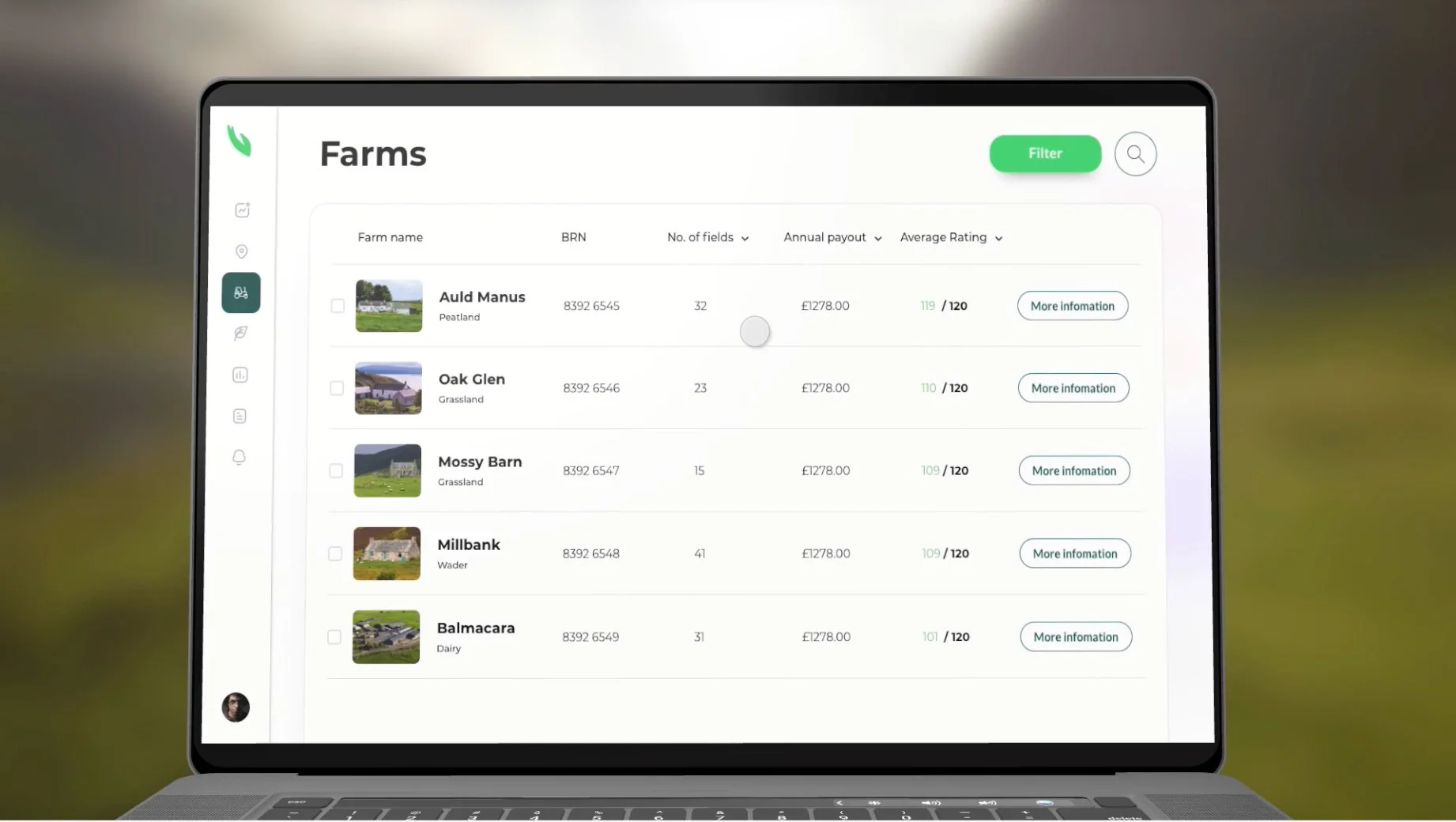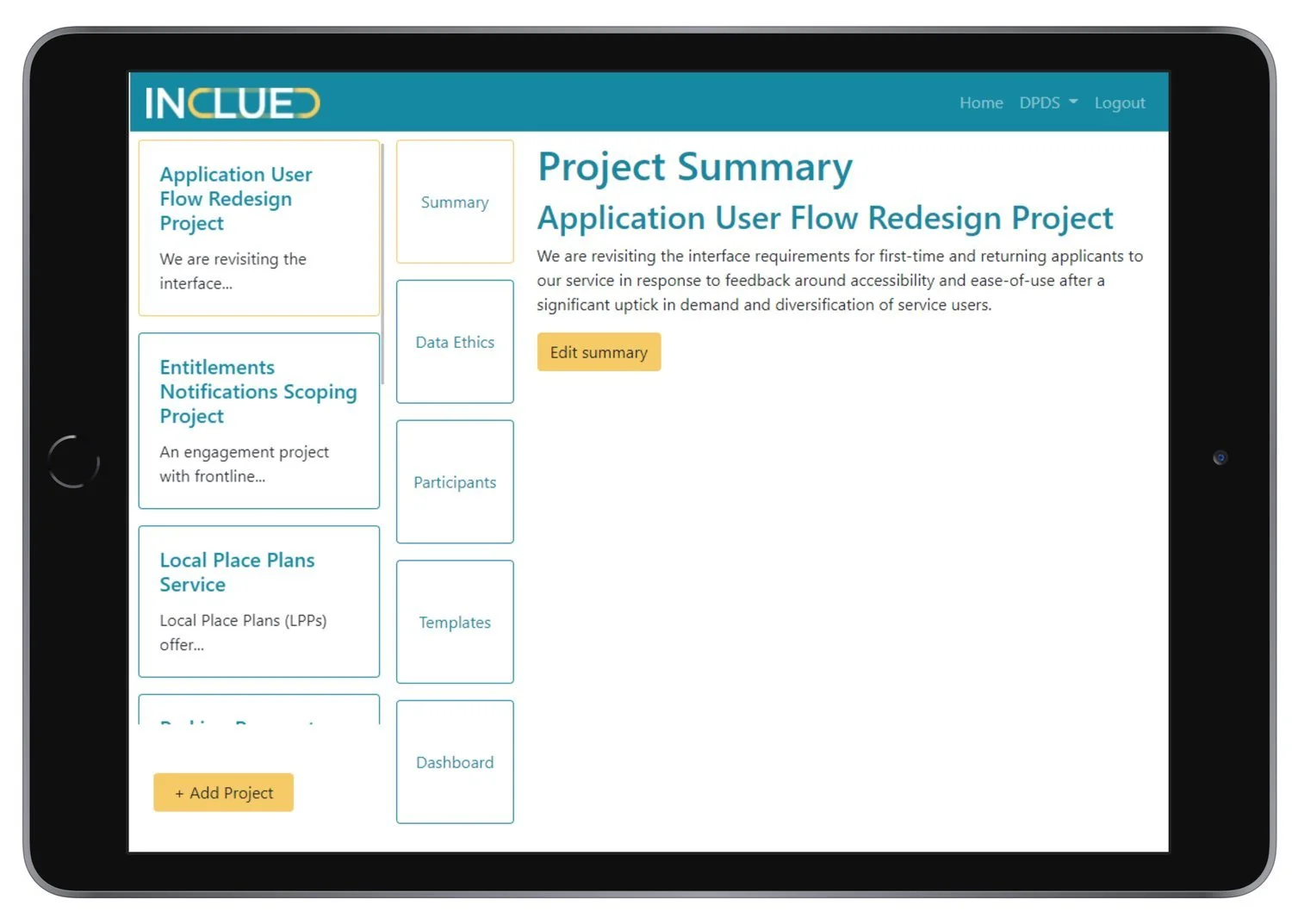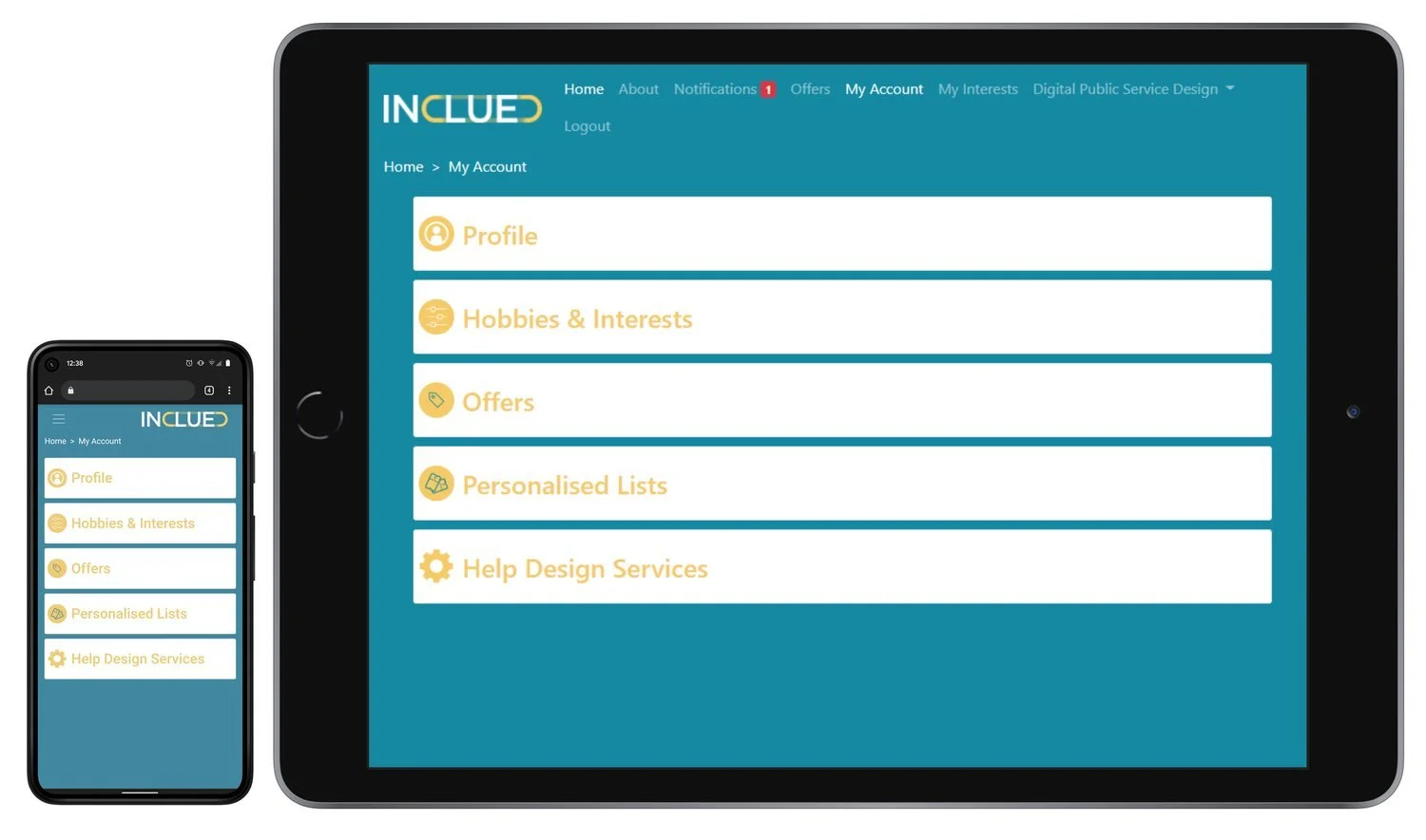Portfolio
Below is a small but representative selection of the companies and products that have emerged from CivTech since our launch in 2016. If you’d like to find out more about any of these—or indeed any that we haven’t featured here—please contact us.
You can also browse our CivTech 7 cohort on the CivTech Demo Day website.
HiTRANS and The Routing Company
In 2020, HITRANS brought the following Challenge to CivTech 5.0:
The geography of the Highlands and Islands results in a challenging transport environment, covering almost 50% of Scotland’s landmass but with only 10% of its population. While dispersed settlements are reliant on a good transport network for connectivity and access to key services, the financial sustainability of traditional transport services is a significant challenge. Traditional models are based on a ‘critical mass’ of demand which by its very nature is lacking in most rural and remote areas.
So how can we transform the future of rural transport and support out highland communities to thrive?
The Routing Company responded to this Challenge.
The Routing Company’s app tracks a vehicle’s real-time location, it’s capacity, and rider pick-ups and drop-offs: even in low or no-internet connectivity environments. This data is supplemented by data feeds generated from vehicles that do have the requisite hardware installed, and is converted into actionable insights, via a dashboard, that show the network’s performance and other critical reporting statistics in real time.
The TRC team consists of mathematicians, computer scientists, and academics alongside policy professionals and shared ride experts. They have a growing staff of 35+ spread across the US and key international markets, including Los Angeles, New York, Boston, Washington, D.C., Edinburgh, Sydney, Singapore, Zurich, and Cairo.
Their goal is to start deploying the driver application on vehicles in the HITRANS area. Later in 2021, and with a recent funding round, they will have space for 5 more innovative agencies to trial its products in Scotland / UK.
NatureScot and Sabbio
In 2020, NatureScot brought the following Challenge to CivTech 5.0:
Scottish Natural Heritage is trialling a farm payments system on behalf of the Scottish Government based on the quality of the results delivered in regard to habitat improvement. We need to help users [mainly but not exclusively farmers] understand the quality of the habitats they are paid to manage, help them gather evidence of improvement, and analyse the data on improving outcomes especially in regard to climate change mitigation, carbon storage, and increasing biodiversity.
In doing so we want to help farmers understand how they can improve nature on their land, and tackle the twin challenges of climate change and biodiversity loss.
So how can technology help farmers improve the environment under their stewardship, and track that improvement?
An entirely new company, Sabbio (formerly known as Iceni Earth), formed itself around this Challenge.
Sabbio puts farmers, crofters, and land managers first. They empower them with digital technology to better manage natural environments and sustainably produce food, whilst ensuring they have a good income. The solution enables farmers to collect ground-level data on their fields, receive information on how to improve them and share that data through a data visualisation platform.
Their founding team includes Tom Woolnough, a sustainable landscapes expert implementing climate solutions, including for UN Agencies; Jamie Woolnough, a UX designer: 1 in 10 people in the UK have used a product made by him; Shebin Rawther, a CTO who delivers enterprise grade omni-channel solutions; Ross Tuffee, a highly motivated entrepreneur, with over 30 years’ experience scaling technology companies.
They’re advancing their solution with NatureScot and looking to engage with farmer groups, and other public and private sector organisations.
The current solution is applicable for anywhere that a user-friendly ground-level assessment is needed. In the UK, they want to support the 330,000+ farmers to verify sustainability and reduce the bureaucratic burden for subsidies, compliance and certification.
Scottish Government and Mydex CIC
In 2021, The Scottish Government’s Digital Directorate brought the following Sprint Challenge to CivTech:
Typically, public services are better when citizens are meaningfully engaged in their design. However, the methods of involving citizens in service design have significant challenges and drawbacks. For example, user research participants and focus groups are typically recruited through commercial agencies – this restricts the demographic, can be a time-consuming and costly exercise, and is not fully accessible as it requires participants to travel to a particular location.
The Scottish Government’s Connecting Scotland initiative aims to get digitally excluded people in Scotland online, by providing them with devices (either a Chromebook or a smartphone) and an internet connection. It aims to engage the 50,000+ Connecting Scotland user-base and provide them with the opportunity to become actively engaged in designing digital public services.
So how can technology be used to engage citizens in designing Digital Public Services?
Mydex CIC responded to this Challenge.
Mydex CIC’s Inclued platform is a two-way engagement platform that makes use of Mydex CIC’s Personal Data Store and personal data exchange platforms. It enables safe, secure, two-way communication between organisations like the Scottish Government and citizens, using personal data held and controlled by the citizen. It has a subscriber side and a citizen’s side. It protects privacy and enables anonymity when desired.
As of August, Mydex CIC has started work on extending their Inclued platform to empower citizens as full partners in designing services they use. The extensions will make it easy for design teams and citizens to find each other, and provide easy-to-use tools for managing ongoing relationships for them both too.
Inclued was originally developed after Mydex CIC successfully completed CivTech 3.0, working with Glasgow City Council as the Challenge Sponsor (and first subscriber to the Inclued platform).
Their team includes Founder and Chief Executive David Alexander and an in-house development team, led by Steve Quinn. Founded in Scotland and registered as a Community Interest Company, its mission and asset lock is designed to ensure sustainability and delivery of innovative solutions for citizen empowerment and engagement as well as the protection of their identity and personal data.
Scottish Government, Lantra Scotland and SkillSeeder
In 2020, the Scottish Government and Lantra brought the following Challenge to CivTech 5.0:
The rural and remote areas of Scotland face significant challenges in retaining and developing the skills required for robust and resilient economies.
Challenges arising from geography and connectivity can make it hard enough to find appropriate mainstream learning opportunities. It is even harder to uncover training that whilst perhaps not certificated by an academic institution nevertheless offers exactly the right content. This is particularly true when what’s needed to observe and learn from the experience of others [for example, lambing, digital marketing, dry staning, or fence repair].
So how can technology help develop a skills sharing system that encourages people to engage, and those with expertise to share their skills, in rural and remote locations?
A team of four came together to respond to the Challenge and formed a new company — SkillSeeder.
SkillSeeder is a training marketplace, which plugs gaps in training supply by focussing on interactive and in-person training in the local community. We connect the dots by enabling more people to share skills: for every skill somebody needs to learn, somebody nearby will already have it. The product also generates up-to-date training-demand insights – something currently hard to find in the industry.
SEPA and RiverTrack
In 2016 SEPA brought the following Challenge to the first CivTech, CivTech beta:
Scotland has effective flood warning systems in place for cities and many towns. Now we would like to reach more and smaller communities. So how can we develop an effective hyper-local system to warn people and give them the time to prepare?
Gary Martin, founder of RiverTrack, addressed this challenge. Gary has over twenty years’ experience as a successful software developer and is a prominent member of the Scottish IoT innovation community.
RiverTrack’s solution is a robust, low-maintenance river level monitoring and alarm system which incorporates low-power network connectivity, cost effective components and innovative design. Acoustic sensors measure river level changes and feed information to display units, which function independently of any communication infrastructure. It enables users to get almost real-time information regarding water levels in their area. Independent of any communication infrastructure [which can fail in adverse conditions] the displays acted as boosters to create a resilient mesh across wide areas, meaning no-one need be without early warning. The early warning system is designed to help preventing damages from floods and allows communities to be more resilient in case of emergency. Resilience is increased by allowing the users to act timely based on flood information and minimise potential damages to people and property.
There are currently 25 active sites and these cover 15 communities — some are RiverTrack supported communities, others are SEPA research sites, and some sites are for partner work.
The solution RiverTrack produced in response to the challenge was the first in a planned range and has the potential to dramatically impact on flooding costs, which ran at over £5bn for the UK in 2015 (Source KPMG). The technology offers peace of mind to people in remote areas by allowing them to check water levels safely. There are also worldwide, insurance industry and data aggregation opportunities, as well as significant cost and operational relief for our amazing but hard-pressed emergency services.
RiverTrack said that “participation in the CivTech programme was significant in the development of a scalability strategy and expansion of their market potential.”
Through the CivTech programme RiverTrack has taken their flood alerting technologies through the contract manufacturing process, CE certification, and to market availability. Working with close partnerships developed during the programme, RiverTrack participated in the Horizon2020 ANYWHERE programme researching extreme weather and climate events for the A4Campiste project based in Catalonia. RiverTrack continues to support local communities and organisations across Scotland in their flood resilience efforts, and has UK and international projects in development.
Transport Scotland and Whereverly
In 2016 Transport Scotland brought the following Challenge to the first CivTech, CivTech beta:
The A9’s dualling between Perth and Inverness provides an opportunity to create sustainable growth in tourism. So how can we utilise technology to drive tourist activity along the route, generating additional revenue and employment?
The team at Whereverly addressed this challenge. Whereverly has commercial, technical and design skills, with 15 years’ experience delivering large scale consumer websites and applications.
Their Highland Discovery solution is a multi-channel, geolocationally-aware ‘radio station’ app that plays through the in-car audio system and delivers content fine-tuned to the traveller’s interests, preferences, exact location and direction of travel. The channels are all synchronised to the landscape the car is travelling through, and are combined with a ‘bulletin’ function promoting curated tourist, cultural and other destinations within the A9’s drive-time.
Highland Discovery’s underlying technology means that ‘radio routes’ can be created quickly and efficiently for any road in the world — and indeed any other ‘line of travel’, be it rail, path, boat etc; and so the opportunity to license the technology is worldwide.
Data created by the journeys represents another significant opportunity, as do partnership agreements with tourism organisations of all types. These opportunities are being developed through an overriding brand, Whereverly.
Historic Scotland and Wilderness Sensors
In 2017 Historic Environment Scotland brought the following Challenge to CivTech 2.0:
Historic Environment Scotland (HES) is the lead public body established to investigate, care for and promote Scotland’s historic environment. The diversity of property type and profile is matched by the diverse geographical spread across the country, in many cases in extremely remote areas. The main goal of HES is to protect existing sites while enabling access to them to share their cultural value. Collecting meaningful data from the 251 un-ticketed sites is essential to understand and better prioritise investments in staffing, conservation and the visitor experience.
Replicade, an Asset Management Technology company with an international reputation, addressed this challenge, eventually forming an entirely new business—Wilderness Sensors.
Replicade delivered a low-cost, modular tool to track direction of travel of visitors and produce environmental data to support HES decision making. By understanding visitor flows, HES can focus its activities on sites which are in high demand and by measuring weather and other environmental data, additional information about potential risks concerning erosion can also be collected and actioned upon.
Scottish Natural Heritage and Oxido
In 2018 Scottish National Heritage brought the following Challenge to CivTech 3.0:
Spending time in nature has enormous benefits for health and wellbeing, educational attainment and personal development. So, how can we use tech to enhance the experience of the outdoors in a way that will deliver its benefits to young people?
Glasgow-based Oxido, in collaboration with Scottish Natural Heritage and supported by CivTech developed Zepto, an outdoor learning, smart phone app with the aim to better connect people with nature. The first iPhone version was launched on 4th March at the annual CivTech Demo Day, by Ben Macpherson, Minister for Public Finance and Immigration.
Mental health, inactivity, disaffection and loneliness are or are becoming major public health problems in Scotland and across the world. This problem is particularly acute in young people.
A powerful way of combatting these problems can be found in the natural world: people who experience the outdoors, even for relatively short times, benefit hugely — especially when that experience has context and meaning. This ‘natural health service’ has never been so important, in that it can significantly reduce the pressure on the NHS, education and social services.
Zepto encourages you to take your first steps in connecting with nature across Scotland, against a growing library of the most common species found in Scotland and offering activities to allow you to explore, share your local places and record your observations.
Stirling Council and Homelync
In 2018 Stirling Council brought the following Challenge to CivTech 3.0:
How can technology help us improve services by better understanding investment requirements for our public buildings?
Homelync addressed this challenge and developed an IoT Access Point that includes industry leading security, environmental sensors and cellular connectivity. The data across thousands of properties can then be simplified, prioritised and analysed to provide the landlord with actionable insight, enabling a proactive approach to property management and customer engagement.
Stirling Council owns and operates a huge range of public facilities and capital assets. The scope and profile of these assets, how they are managed and who they are managed by, made them difficult to track as a single entity and therefore restricted visibility of the total cost to manage and maintain. Some of the newer buildings had BIM [building information management] systems but the vast majority did not, which meant that much of the information was uncoordinated and disjointed in inefficient systems.
The system has benefitted the council by saving management and factoring services and Homelync have attracted a number of new investors. The system is now installed their system in Scotland and further expansion is expected in 2021.
Scottish Anti-Illicit Trade Group and Vistalworks
In 2018 Scottish Anti-Illicit Trade Group brought the following Challenge to CivTech 3.0:
How can tech help stop illicit trading?
Vistalworks, founded by Vicky Brock, addressed this challenge and developed an AI-driven early warning system that identifies patterns and anomalies around fake goods and triggers messages that highlight the likely risks and impacts in order to help consumers make more informed choices.
Scotland has an issue with the widespread sale of illicit products. These include everything from unregulated, counterfeit and dangerous products. The problems caused by illicit trade are numerous. Consumers are often unaware that they are buying these products, and the repercussions these transactions can have on themselves and their communities. Illicit products often fail to meet health and safety standards, with significant personal safety risks to the user. Much of revenue generated from illicit trade funds further criminal activity.
Police Scotland, Trading Standards Scotland, HMRC and the Scottish Anti Illicit Trade Group have identified that they, as partners, would like to investigate solutions that can analyse data and identify and/or predict illicit trading at a local community level.
The data capture tool and associated database and data models score the likelihood of a product/seller being fake, express relatable consumer ‘pain’ associated with it, and trigger appropriate messages to the end consumer so they can make informed choices.
Although developed specifically for this task, the technology has multiple applications and can be used in other areas to make predictions based on specific data.
Forestry and Land Scotland and Cumbria Tree Growers
In 2019 Forestry and Land Scotland brought the following Challenge to CivTech 4.0:
How might we use technology to make better use of Scotland's valuable but limited supply of high quality tree seed?
5 separate teams (TreeTape, Forestart, Forest Research, Silvibio, and Elsoms Seeds) took on the challenge to fulfil its requirements and this is an example of one of the team’s innovation within the CivTech process.
Scotland was the first country in the world to declare a climate emergency, and planting more trees is vital if we are to tackle that emergency head on. This demand is well understood by the Scottish Government and is articulated in both the recently published Forestry Strategy for Scotland and the Climate Change action plan. However, the urgent need to do so much and so quickly in order to respond to this emergency means that existing processes and supplies of high quality tree seed are under significant strain. We need to find new ways of approaching the problem that ideally use less manual labour and that make more efficient use of the supplies of seed that we already have.
Michael Ashby and his wife Angela, the founders of Cumbria Tree Growers, are wholesale producers of high quality bare rooted trees and hedge plants for farmers, landowners and forestry companies. Michael also has 30 years’ experience of tree nursery production working for himself and also as Nursery Manager at one of the UK’s largest tree nurseries.
Cumbria Tree Growers’ solution — TreeTape — is a true innovation in a traditional nursery production system for the key commercial coniferous forestry species grown in Great Britain. Inspired by new developments in vegetable production, the solution uses the most efficient means of production currently available to triple the typical yield of seedlings produced from a kilo of seed. It is a method of transplanting that has never been used before with trees, greatly reduces production time and provides further efficiencies throughout the whole production system, from seed sowing to the final saleable product.
West Dunbartonshire and M2M Cloud
In 2019 West Dunbartonshire Council brought the following Challenge to CivTech 4.0:
Local Authorities have a multitude of assets in use ranging from ICT devices to wheelie bins. These each carry varying degrees and types of risk (financial, security, and reputational) if lost. Current manual audits and logging processes have proven insufficient and expensive in accounting for these assets, particularly those that are not connected to a network. How can we use technology to track off-network council assets at minimal cost?
M2M Cloud — an IoT solutions specialist with over 10 years’ experience in developing end-to-end connected sensor products — addressed this Challenge.
Based in Dundee, they have developed a range of award-winning asset tracking and security products and are considered leaders in this field. In 2019 M2M Cloud won the first public sector IoT contract for their new Neptune product, a connected risk management solution for monitoring water systems, with Highland and Islands Council.
M2M Cloud’s solution is Artemis, an innovative new asset tracking product that allows organisations to track and locate large numbers of physical assets without the deployment of complex infrastructure. Asset location and utilisation insights provide organisations with significant cost-saving benefits and operational efficiencies across public sector, healthcare and manufacturing sectors.
City of Edinburgh Council and Novoville
In 2019 the City of Edinburgh Council brought the following challenge to CivTech 4.0:
How can we use technology to manage the property condition of communal areas in privately owned tenements?
Novoville created a web and mobile app that delivers solutions to intractable problems and guides users every step of the way from the identification of a necessary repair all the way to its completion, including payment for the works. It will lay out key steps of the process and allow users to take them on with minimum hassle.
A lack of Property factoring of historic Tenements in Edinburgh leaves Tenement owners left to manage their own common repairs using the process outlined by the Tenements (Scotland) Act 2004. Local Authorities have no powers under this legislation to compel action and it can be difficult for the City of Edinburgh Council (CEC) as a landlord to carry out repairs to its homes in mixed tenure blocks without the agreement of other owners.
Novoville was founded in 2016 in response to the growing need for more participatory, accountable, transparent, efficient and inclusive local governance. It is a tech start-up with a unique mission to transform the public services we all use and improve tomorrow's government policies, making them citizen-centric. The company believes the collective intelligence that people have about the places they live in should be the starting point for any policy design.
Novoville created a web and mobile app that delivers solutions to intractable problems and guides users every step of the way from the identification of a necessary repair all the way to its completion, including payment for the works. It will lay out key steps of the process and allow users to take them on with minimum hassle.
Over 60 local authorities around Europe are currently using Novoville to improve the services they offer to citizens.

























